
- Homepage
- Age
- Chinese Dynasty
- 1950-1999 (2)
- 20th Century (5)
- Kangxi (7)
- Kangxi(1662-1722) (3)
- Ming (1368-1644) (37)
- Qianlong (13)
- Qing (1644-1911) (567)
- Republic (5)
- Republic / Proc (2)
- Republic Of China (6)
- Republic Period (3)
- Song (2)
- Song (960-1279) (3)
- Tang (618-907) (2)
- Transitional (3)
- Unknown (2)
- Yongzheng (2)
- 清朝 (2)
- ... (4157)
- Maker
- Material
- Bone China (7)
- Brass (6)
- Brass, Porcelain (3)
- Bronze (2)
- Ceramic (17)
- Ceramic & Porcelain (34)
- Ceramic / Porcelain (25)
- Ceramic / Pottery (4)
- Ceramic, Porcelain (40)
- China / Porcelain (16)
- Glass (3)
- Metal (8)
- Ormolu (2)
- Porcelain (1136)
- Porcelain / China (125)
- Porcelain, Cut Steel (3)
- Porzellan (4)
- ... (3388)
- Style
- Type
EARLY DERBY PORCELAIN FIGURE OF A PIPER, Patch period, circa 1765
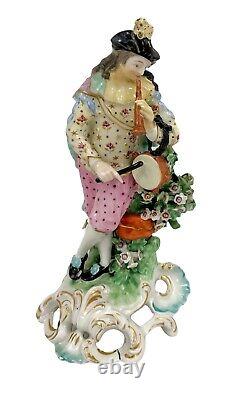
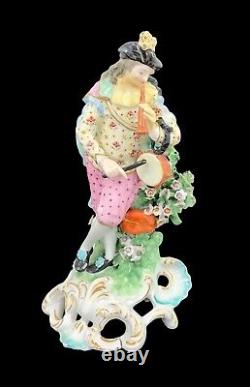
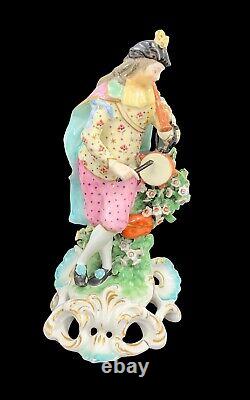
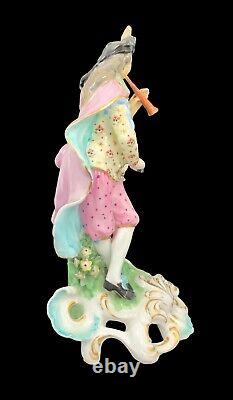
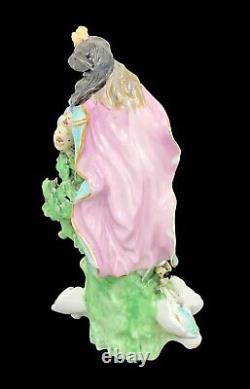
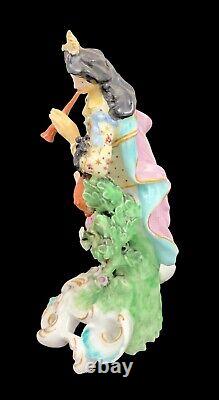
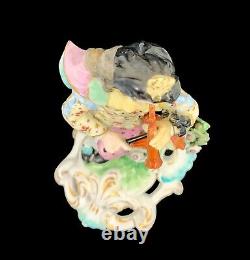
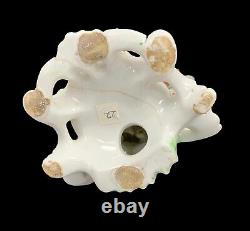
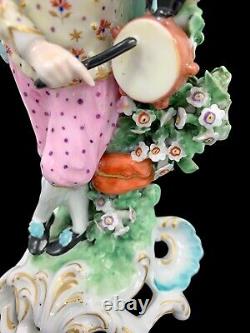
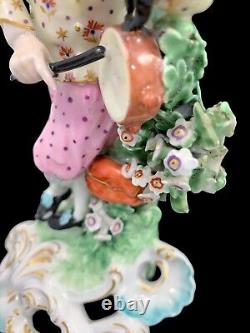
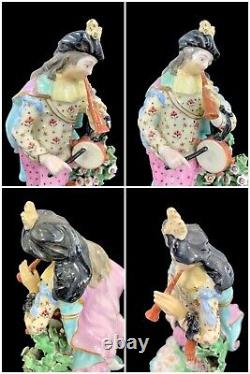
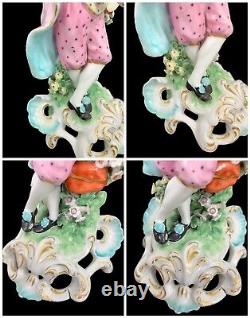


Figure in soft-paste porcelain painted with enamels and gilded of a man playing a pipe and tabor. He stands on a rococo base, wears a plumed hat over long hair, with a flowered cloak, tunic with slashed sleeves and loose breeches, and he leans against a tree trunk on which a satchel is suspended. Patch marks' on the base. One can find it in the British museum. As well as in the museum of Victorian and Albert. This figurine appears to be part of a unique collection of porcelain Derby figurines, which has been meticulously gathered over many years.
The Derby Porcelain factory has its roots in the late 1740s, when Andrew Planché, a Walloon Huguenot refugee, started making simple porcelain toys shaped like animals in his back yard. The combination of various traditions, porcelain making skills and sophisticated clients enabled Duesbury to create one of the best porcelain factories of the 18th and 19th Centuries, which after many ups and downs is still operative today.
The reputation of the factory's output was at its 18th century peak and in self-published advertising material, the "Derby Porcelain Manufactory" was proclaiming itself to be "the second Dresden". Duesbury maintained what would now be termed "retail space" independent of the Chelsea works, at a former pub - The Castle Tavern - in Bedford Street, Covent Garden. This was both a warehousing facility and an exhibition area, and was the shopfront for what had by now become "a very thriving and lucrative trade". Derby porcelain was hand painted, some with with imari patterns, in London at the Chelsea pemises and the output from this dual operation is Chelsea Derby.
It's worth noting that Duesbury also used representations of the marks used on Sevres, Dresden and Berlin-made porcelain, as he considered his own wares to be superior to every other source other than those three. Antique British porcelain is never perfect. Kilns were fired on coal in the 1800s, and this meant that china from that period can have some firing specks from flying particles. British makers were also known for their experimentation, and sometimes this resulted in technically imperfect results. Due to the shrinkage in the kiln, items can have small firing lines or develop crazing over time, which should not be seen as damage but as an imperfection of the maker's recipes, probably unknown at the time of making.Items have often been used for many years and can have normal signs of wear, and gilt can have signs of slight disintegration even if never handled. Some minor scratches, nicks, stains and gilt disintegration can be normal for vintage items and need to be taken into account. Restoration to feathers on cap; restoration to left hand; restoration to left forearm; restoration to neck, extending into the collar; hairline crack to right leg; crack to stump on reverse, underneath the cape; some pitting and pinpricks to the green enamel covering the leaves on reverse; some tiny losses to leaves and petals; two chips along the edge of the cape on reverse; crack to the rocaille base at the front; chip to the left shoe. I have tried to describe the condition of the lot as fully as possible, as you can see from the extensive detail.
However, please review all the photos carefully, and if you are in any doubt, please don't hesitate to ask for further examination or additional photos. Item will be sent fully tracked and insured.This item is in the category "Pottery, Ceramics & Glass\Decorative Pottery, Ceramics & Glass\Figurines". The seller is "popugai" and is located in this country: GB. This item can be shipped to North, South, or Latin America, all countries in Europe, all countries in continental Asia, Australia, New Zealand, Egypt, Reunion, South Africa.
- Handmade: Yes
- Production Technique: soft-paste porcelain
- Colour: Multicoloured
- Country/Region of Manufacture: United Kingdom
- Style: Rococo
- Product Line: Patch period
- Material: Porcelain
- Theme: PIPER
- Type: Figurine
- Features: Hand Painted
- Antique: Yes
- Year Manufactured: 1765
- Subject: musician
- Brand: Derby
- Production Style: Art Pottery
- Original/Licensed Reproduction: Original
- Time Period Manufactured: 1750-1799
- Era: Georgian (1714-1837)

